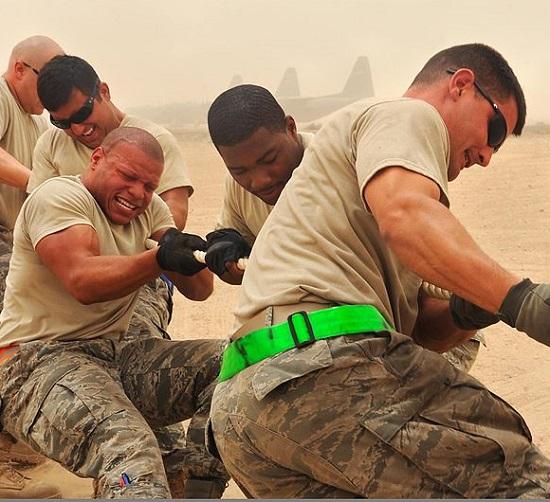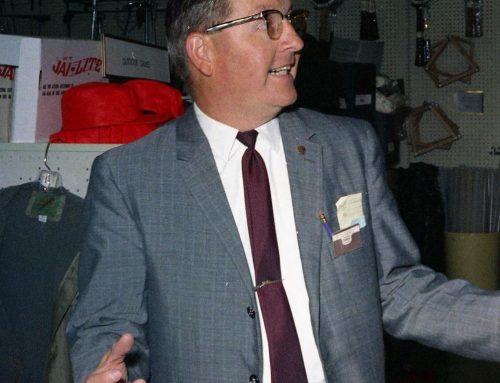What makes a team successful? Winning teams share certain characteristics that enable them to perform at their peak, accomplish goals, and thrive in competitive environments. Understanding team dynamics and fostering the right environment is key to developing a high-performing and collaborative team. This article will explore the essential elements that contribute to winning team dynamics and provide insights into creating an environment primed for success.
Shared Purpose and Goals
Aligning around a common purpose and goals is foundational for building an effective team. When members are united by a shared vision and objectives, it provides focus and motivation to work together to achieve success. Clearly defined goals give teams a defined target to work towards, while an inspiring purpose rallies members around a meaningful cause.
Research shows that when teams have clarity around goals and purpose, it enhances coordination, efficiency and effort. Team members understand how their individual contributions help advance the team’s progress, facilitating collaboration. Studies also indicate that having shared goals increases team satisfaction and effectiveness.
For managers, clearly communicating team purpose and objectives is crucial. Setting specific, measurable goals and outlining how they ladder up to the broader vision provides alignment. Leaders should also encourage team member input to ensure buy-in. Reviewing goals regularly and celebrating achievements keeps teams engaged. By anchoring around shared purpose and goals, teams gain the focus and drive to succeed.
Trust and Openness
Developing a culture of trust and openness is vital for fostering positive team dynamics. When members feel psychologically safe to take risks, share ideas openly and be vulnerable, it enhances communication, problem-solving and innovation. Teams that operate with high trust are shown to be more productive and responsive in high-pressure situations.
Trust builds gradually through consistent behaviors that demonstrate integrity, concern for others, and accountability. Leaders set the tone by modeling vulnerability, active listening without judgement, and having difficult conversations respectfully. Providing constructive feedback and extending trust before members have “earned it” also develops trust quickly.
Openness is enhanced through practices like brown bag lunches where members share about themselves, team building exercises, and establishing group norms around confidentiality. Leaning into discomfort and having moments of honesty about team interactions builds openness over time. A foundation of trust and openness enables the sincere communication and camaraderie winning teams share.
Effective Leadership
Strong leadership plays a pivotal role in cultivating winning team dynamics. Effective leaders guide teams with vision, inspire members to excel, and create an environment that unlocks the team’s potential. They understand team members’ strengths and tailor their style to motivate individuals based on their needs.
Exemplary leaders embody qualities like integrity, emotional intelligence, decisiveness, and flexibility. They balance tasks and results with care for their team’s well-being and development. Outstanding leaders communicate effectively, provide regular feedback, and empower members to do their best work. They also role model vulnerability, accountability and growth mindset.
Leaders employing a collaborative and servant leadership approach tend to have the most engaged teams. Rather than exerting top-down control, they involve members in decision-making, actively listen, and mentor. This leads to greater commitment, creativity and trust in the leader. While the leader’s impact is substantial, they also recognize when to step back and let the team direct itself. By developing and championing their teams, great leaders catalyze winning dynamics.
Defined Roles and Responsibilities
When team members understand their individual roles and responsibilities, it establishes clarity that optimizes teamwork. Clearly defined roles reduce ambiguity about who is accountable for specific tasks and decisions. Documenting roles and responsibilities also improves coordination by outlining handoffs between members.
Well-defined roles allow members to focus their efforts based on their strengths without overlapping duties or gaps in responsibility. Leaders should ensure roles align to skill sets and discuss any role confusion promptly. Creating RACI charts can provide helpful visual mapping of team members’ roles and levels of involvement on key tasks.
Setting responsibilities gives members ownership over certain processes or decisions. However, teams maintain flexibility by cross-training and avoiding rigid silos. As objectives evolve, revisiting and realigning roles helps teams adapt while maintaining transparency. Keeping team roles and responsibilities clear is critical for effective collaboration.
Open Communication and Feedback
Open communication and feedback are essential for teams to function optimally and make sound decisions. When information flows freely across members, it enables coordination, knowledge sharing, and problem solving. Members should feel comfortable asking questions, challenging assumptions, and raising concerns.
Leaders can model openness by being transparent about goals, decisions and company information. Shared documentation, open office layouts and team messaging channels also foster open communication. Creating psychological safety and encouraging respectful debate of ideas helps as well.
Along with communication, constructive feedback between members and from leaders improves performance. Timely, specific feedback helps members continuously improve and grow. Feedback sharing should become ingrained in the team’s rhythm through practices like weekly one-on-ones, retrospectives or peer reviews. Valuing ideas equally and providing balanced positive and developmental feedback makes it effective.
Open communication and feedback nurture an engaged, trusting team environment where members collectively thrive.
Collaboration and Teamwork Skills
Strong collaboration and teamwork skills enable teams to work together seamlessly. When members have emotional intelligence, influence, accountability, and conflict resolution abilities, it facilitates coordination and performance.
Emotional intelligence skills like empathy, active listening, and self-awareness allow members to sense others’ needs and collaborate harmoniously. Influence skills help members provide input, persuade without formal authority, and gain buy-in. Being accountable to the team and reliable follow through on commitments builds trust. Finally, conflict resolution and negotiation help navigate disagreements productively.
Teams should invest in developing these skills through training workshops, peer coaching, and setting expectations around team behaviors. Leaders can reinforce skills by modeling them consistently. Recognizing those who exhibit key skills encourages more effective teamwork. Assessment tools also help identify team and individual development areas. By honing critical interpersonal skills, teams can optimize how members work together.
Continuous Improvement and Adaptability
Top-performing teams are committed to continuously improving and adapting as circumstances evolve. They view challenges as opportunities to get better and learn rather than failures. Leaders encourage discussing what is working well and where the team can improve after major initiatives.
Reflecting on team dynamics, problem-solving approaches and collaboration periodically helps identify growth areas. Teams then brainstorm and implement solutions to improve, from shifting team roles to changing processes. Seeking input from stakeholders and external coaches provides outside perspective.
To stay ahead, teams also assess market or industry changes that may impact their business. They are willing to re-prioritize goals or experiment with new methods. Ongoing training helps members gain skills to address emerging needs. By taking a growth mindset approach, teams position themselves to excel as conditions change.
In today’s complex business landscape, developing winning team dynamics is imperative for organizations to thrive. With trust, transparency, skilled leadership and commitment to continuous growth, teams are equipped to tackle challenges and achieve shared success. By understanding these team fundamentals, leaders can foster an environment where members are inspired to reach their full potential. The result is a collaborative, resilient team primed for excellence.
Sources:
- WeWork Article: Nine Characteristics of Great Teamwork
- Civil Service College Article: Understanding the Differences Between Teamwork and Collaboration
- Haiilo Blog: What Is Team Communication, Why It Matters and How to Get It Right
- RallyBright Article: What Are Team Dynamics & Why Are They Important?
- Indeed Article: 7 Characteristics of Effective Teams
- Indeed Article: Teamwork and Collaboration: How To Improve Both at Work
- Everhour Blog: How to Manage and Improve Team Dynamics
- Forbes Article: 14 Characteristics Of High-Performing Teams
- TeamStage Article: Collaboration vs. Teamwork: Key Differences
- BetterUp Article: Improve Team Dynamics With These 6 Steps
- Recruitee Article: 9 Characteristics Effective Teams Have in Common
- Cirkus Blog: Importance of Teamwork and Collaboration in the Workplace
- Think with Google Article: Team Dynamics: The Five Keys to Building Effective Teams
- Blue Beyond Consulting Article: 10 Attributes of High-Performing Teams
- Kissflow Article: 5 Strategies to Improve Teamwork and Collaboration
- Chanty Blog: What Are The Examples Of Effective Team Dynamics in 2023?
- The Undercover Recruiter Article: Top 7 Qualities of a Successful Team










